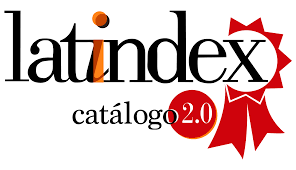Cadmium concentrations in the soil-plant system in coffee crops in two production systems
DOI:
https://doi.org/10.55996/dekamuagropec.v2i1.49Keywords:
soil pollution, maximum permissible limits, organic matter, heavy metals, pHAbstract
Concern about cadmium content in the soils of crop-producing areas has been increasing in recent years. In the present investigation, the concentration of cadmium in the soil, leaf and fruit system was evaluated in coffee farms under two production systems, organic and conventional, in the district of Omia, Amazonas region, Peru. Soils, leaves and fruits were sampled and the cadmium concentration was measured by spectrophotometry, then a comparison was made by means of an analysis of variance; the soils were also characterized according to their pH, organic matter and electrical conductivity characteristics and a Pearson correlation was carried out. As a result, the concentration of cadmium in the soil, leaf and fruit systems did not exceed the Maximum Permissible Limits (MPL) stipulated by the Peruvian Ministry of the Environment, obtaining higher values in the soil with 0.72 mg kg-1, while lower values were found in the fruit with 0.1 mg kg-1. Comparing the concentration in two production systems, it is observed that both in soil and leaves the highest concentration is in the organic system, while in fruits the highest concentration is in the conventional system. In addition, a significant and positive correlation was found between the cadmium content of the soils and their physicochemical characteristics such as pH and percentage of organic matter. In conclusion, the results obtained do not exceed the LPM, so cadmium concentration in this crop is not considered a problem.
Downloads
References
Acevedo, E., Carasco , M., León , O., Silva, P., Casti-llo, G., Ahumada, I., . . . Gonzáles, S. (2005). Informe de criterios de calidad de suelo agrí-cola.Chile: SAG.
Ali, M. H., & Al-Qahtani, K. (2012). Assessment of some heavy metals in vegetables, cereals and fruits in Saudi Arabian markets. Egyptian Journal of Aquatic Research(38), 31-37.
Alloway, B. J. (2013). Heavy metals in Soils: Trace Metals and Metallloids in Soils and their Bioavailability(3ra ed.). Springer.
Arevalo, E., Obando , M. E., Zúñiga, L. B., Arévalo, C. O., Baligar, V., & He, Z. (2016). Metales Pesa-dos En Suelos De Plantaciones De Cacao (Theobroma cacao L.) En Tres Regiones Del Perú.EcologíaAplicada,16(2),81-89. doi:http://dx.doi.org/10.21704/rea.v15i2.747
Bonomelli, C., Bonilla, C., & Valenzuela, A. (2003). Efecto de la fertilización fosforada sobre el contenido de cadmio en cuatro suelos de Chi-le. Pesq. agropec. bras., 38(10), 1179-1186.
Chen, Y., Hu, W., Huang, B., Weindorf, D. C., Rajan, N., Liu, X., & Niedermann, S. (2013). Accu-mulation and health risk of heavy metals in vegetables from harmless and organic vegeta-bleproductionsystemsofChina. EcotoxicologyandEnvironmentalSafety(98),324-330. doi:http://dx.doi.org/10.1016/j.ecoenv.2013.09.037
Cheraghi,M.,Lorestani,B.,Merrikhpour,H.,& Rouniasi, N. (2013). Heavy metal risk assess-ment for potatoes grown in overused phos-phate-fertilizedsoils.EnvironMonit Assess(185),1825-1831.doi:DOI 10.1007/s10661-012-2670-5
Dixit, R., Wasiullah, Malaviya, D., Pandiyan, K., Singh , U. B., Sahu , A., . . . Paul, D. (2015). Bioremediation of Heavy Metals from Soil and Aquatic Environment: An Overview of Principles and Criteria of Fundamental Pro-cesses.Sustainability,7(2),2189-2212. doi:doi:10.3390/su7022189
Grytsyuk,N.,Arapis,G.,Perepelyatnikova,L., Ivanova,T.,&Vynograds'ka,V.(2006). Heavy metals effects on forage crops yields and estimation of elements accumulation in plants as affected by soil. Science of The Total Environment,354(2-3),224-231. doi:https://doi.org/10.1016/j.scitotenv.2005.01.007
Huang, Y., Li, T., Wu, C., He, Z., Japenga, J., Deng, M., & Yang , X. (2015). An integrated approach to assess heavy metal source apportionment in peri-urban agricultural soils. Journal of Haz-ardousMaterials,299,540–549.doi: https://doi.org/10.1016/j.jhazmat.2015.07.041
Khan, A., Khan, S., Khan, M. A., & Qamar, Z. (2015). The uptake and bioaccumulation of heavy metals by food plants on plant nutrients, and associated health risk: a review. Environmen-talSciencePollution(22),13772-13799. doi:10.1007 / s11356-015-4881-0
Lara, F. M., Ventura, A., Ehsan, M., Rodríguez, A., Vargas, J., & Landero, N. (2015). Contenido De Cd YPb En Suelo YPlantas De Diferentes Cultivos Irrigados Con Aguas Residuales En El Valle Del Mezquital, Hidalgo, México. Rev. Int. Contam. Ambie., 31(2), 127-132.
MINAM. (25 de Marzo de 2013). Aprueban Estánda-res de Calidad Ambiental (ECA) para Suelo. El Peruano.
Ortiz, H. G., Trejo, R., Valdez, R. D., Arreola, J. G., FLores , A., & López, B. (2009). Fitoextracción De Plomo YCadmio En Suelos Contami-nados Usando Quelite (Amaranthus hybridus L.) YMicorrizas. Revista Chapingo Serie Horticultura, 15(2), 161-168.
Reyes, Y. c., Vergarsa , I., Torres, O. E., Días, M., & Gonzáles, E. E. (2016). Contaminación Por Metales Pesados: Implicaciones En Salud, Ambiente YSeguridad Alimentaria. Revista Ingeniería,InvestigaciónyDesarrollo,, 16(2), 66-77.
Senior, W., Valarezo, C., Sánchez , O., Johnny, T., Yaguachi, A., Rodriguez, G., . . . Marquez, A. (2016). Evaluación De La Distribución Del Contenido Total YBiodisponibles De Los Metales Pesados, Cu, Cd, Pb YHg En Sedi-mentos Superficiales Del Estero De Santa Rosa, Provincia De El Oro, Ecuador. Open ScienceFramework. doi:10.17605/OSF.IO/KNSYZ
Sifiuentes, E., Albujar, E., Contreras, S., León, C., Moreyra, J. C., & Santa María, J. (2017). Anuario Estadístico de la Producción Agríco-la y Ganadera 2016.Lima: SEIA.
Simón, M., Peralta, N., & Costa, J. L. (2013). Relacion Entre La Conductividad Eléctrica Aparente Con Propiedades Del Suelo YNutrientes. Ciencia del suelo, 31(1), 45-55.
Tudela, J. W. (2015). Caracterización socioeconómica y ambiental de l aproducción de café orgánico en el Perú. Rev. Investig. Altoandin., 17(1), 23-32.
Union Europea. (Marzo de 2017). Metales pesados. ObtenidodeMetalesPesados: http://plaguicidas.comercio.es/MetalPesa.pdf
Verkleig,A.C.,Golan,A.,Antosiewisz,D.M., Schwitzguébel, J., & Schröder, P. (2009). Dualities in plant tolerance to pollutants and their uptake and translocation to the upper plant parts. Environ. Exp. Bot.(67), 10-22.
Wang, Q., Xie , Z., & Li, F. (2015). Using ensemble models to identify and apportion heavy metal pollution sources in agricultural soils on a local scale. Environmental Pollution, 206, 227-235.
Downloads
Published
How to Cite
Issue
Section
License
Copyright (c) 2021 Manuel Oliva, Aguinaldo García Pérez, Ilser Isidro Chuquizuta Ventura, Karol Rubio, Santos Leiva, Roicer Collazos

This work is licensed under a Creative Commons Attribution-NonCommercial 4.0 International License.
Los autores que publican en esta revista aceptan los siguientes términos:
- Los autores conservan los derechos de autor y conceden a la revista el derecho publicación con la obra, simultáneamente licenciada bajo una licencia de Creative Commons CC By que permite a otros compartir el trabajo, pero citando la publicación inicial en esta revista.
- Los autores pueden celebrar acuerdos contractuales adicionales separados para la distribución no exclusiva de la versión publicada de la obra de la revista (por ejemplo, publicarla en un repositorio institucional o publicarla en un libro), pero citando la publicación inicial en esta revista.
- Se permite y anima a los autores a publicar su trabajo en línea (por ejemplo, en repositorios institucionales o en su sitio web) antes y durante el proceso de presentación, ya que puede conducir a intercambios productivos, así como una mayor citación del trabajo publicado (https://web-archive.southampton.ac.uk/opcit.eprints.org/oacitation-biblio.html)















